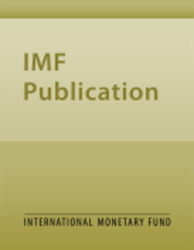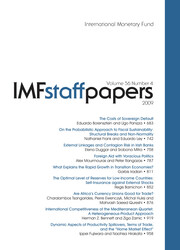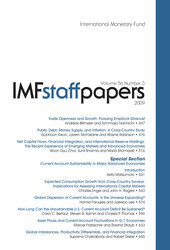
Lessons from Empirical Models of Exchange Rates:Volume 34 No. 1
Changes in exchange rates have received prominent attention during the 1980s, particularly the extraordinary changes in exchange rates between the US dollar and other major currencies.
READ MORE...
Volume/Issue:
Volume 1987
Issue 001
Publication date:
ISBN:
Add to Cart by clicking price of the language and format you'd like to purchase
Available Languages and Formats
Topics covered in this book
This title contains information about the following subjects.
Click on a subject if you would like to see other titles with the same subjects.
Exports and Imports , Finance , Economics- Macroeconomics , Taxation - General , International - Economics , Poverty and Homelessness , export restraint agreement , tariff rate , transactions price , price effect , government growth , Tariffs , Exchange rates , Personal income , Export restrictions , Europe , Global , Africa
Summary
This paper finds scope for some optimism that the empirical modeling of exchange rates will someday lead to significantly better-than-random explanations. The first part of the paper focuses on the relationships among exchange rates, national price levels, interest rates, and international balances of payments and provides perspectives on some elements of truth about these relationships that are consistent with the past decade of modeling failures. The lessons emphasize the importance of analyzing exchange rates within complete macroeconomic frameworks and of assuming that expectations are formed in ways consistent with the structural models or with information that can be easily extracted from time series of relevant variables. The open issues include the questions of whether it is adequate or appropriate to treat assets as perfect substitutes or, equivalently, to use the uncovered interest rate parity hypothesis. To the extent that efforts are devoted to modeling exchange rates in general equilibrium frameworks that do not treat assets as perfect substitutes, a second open issue is how to distinguish assets and to specify a basis for portfolio preferences that has solid microeconomic foundations.
Copyright © 2010 - 2024
Powered by:
AIDC



